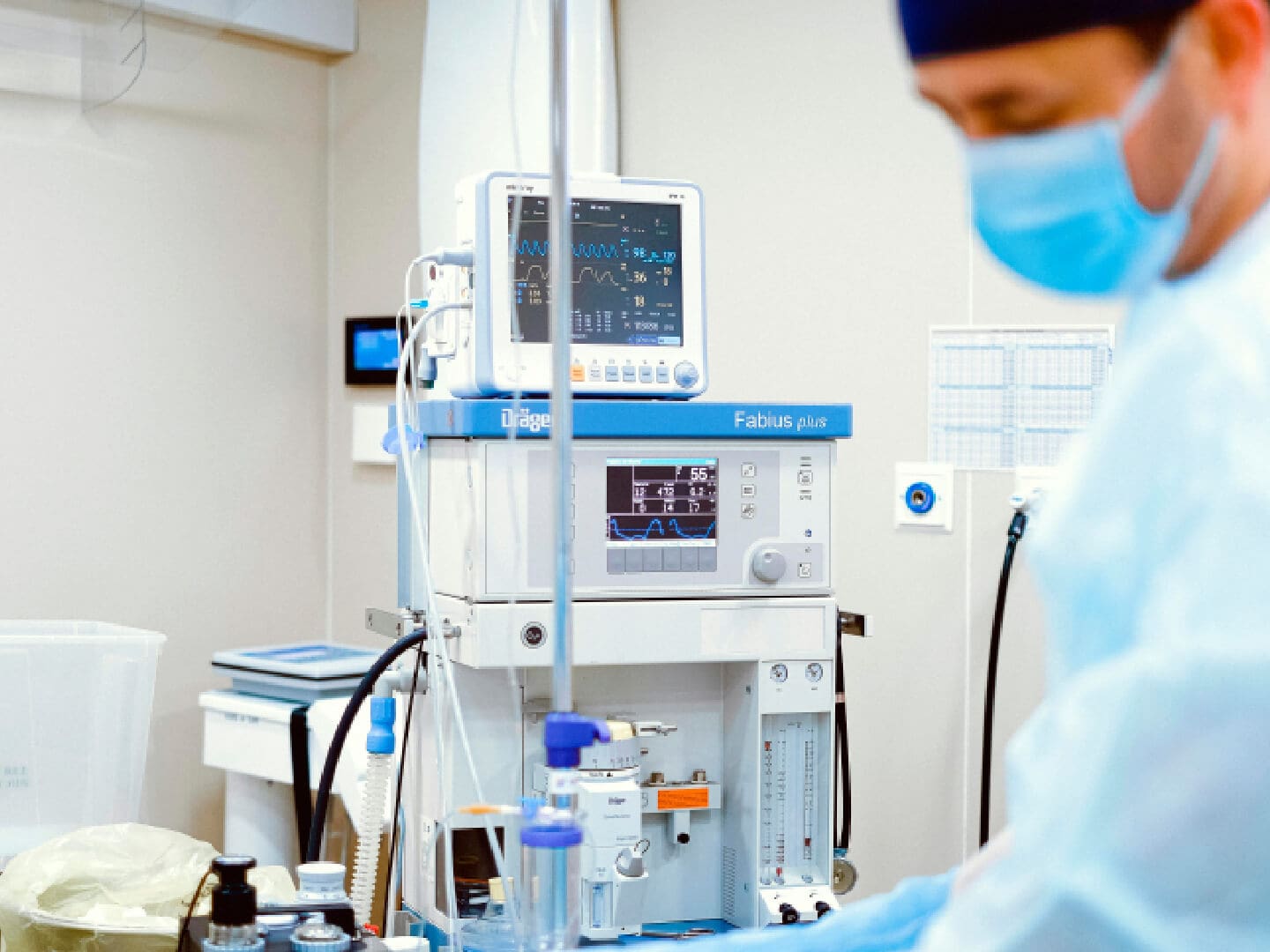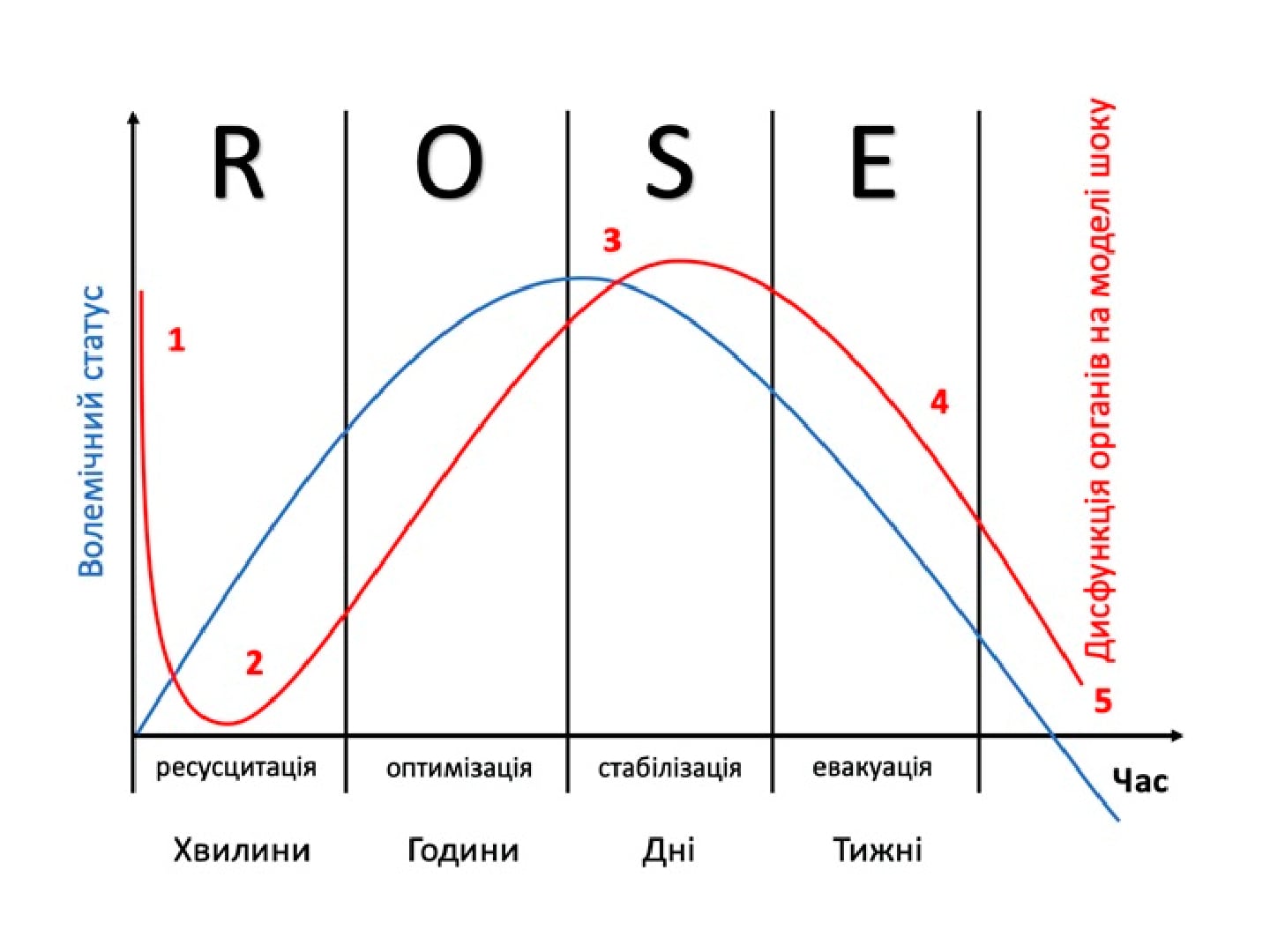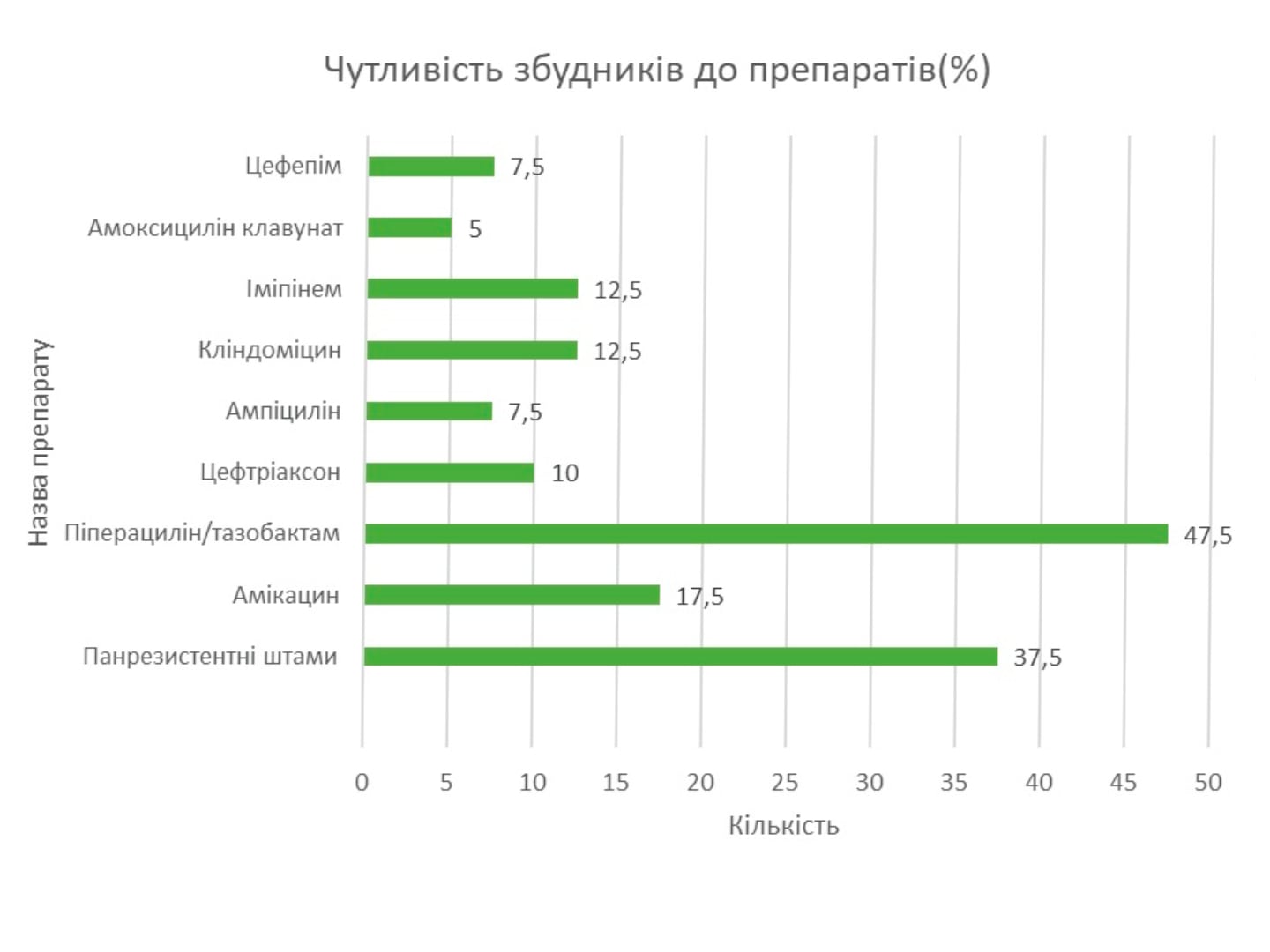Severe community-acquired pneumonia: principles of diagnostics and intensive therapy

Background. Pneumonia is an important medical and social problem due to its high prevalence, high rates of disability and mortality, and significant economic losses due to this disease. In Ukraine in 2017, the incidence of pneumonia among adults was 384.0 cases per 100,000 population, and the mortality rate was 11.7 per 100,000 population, i. e. more than 3 % of those who had pneumonia died. Community-acquired pneumonia (CAP) is the leading cause of morbidity and mortality from pneumonia among all age groups worldwide: 3-4 million people suffer from CAP with high morbidity and mortality.
Objective. To analyze the pathogenesis, diagnosis, and treatment of severe CAP from the modern literature data to optimize the treatment of this group of patients.
Materials and methods. Bibliosemantic, comparative, and system analysis methods were used. The proposed recommendations are based on the analysis of modern literature, the results of randomized studies, and meta-analyses devoted to the investigation of the problem of diagnosis and management of severe CAP.
Results and discussion. The problems of pathogenesis, diagnosis, and treatment of severe CAP were analyzed using modern literature data to optimize the treatment of this group of patients. CAP can be caused by various pathogens, suchas Streptococcus pneumoniae, Haemophilus influenzae, atypical bacteria (eg, Chlamydia pneumoniae, Mycoplasma pneumoniae, Legionella species), and viruses. It is quite difficult to establish the etiology of pneumonia even with the use of modern microbiological technologies, therefore, in many countries of the world, a classification is used that takes into account the conditions of the occurrence of the disease, the features of the infection of the lung tissue, as well as the immune reactivity of the patient’s organism. This classification makes it possible to predict the probable causative agent of the disease with a fairly high degree of probability.
The diagnosis of CAP is considered established in the presence of radiologically confirmed focal infiltration of lung tissue and at least two of the following clinical signs: acute onset of the disease with a body temperature >38 °C, cough with sputum, physical signs (muffled or dull percussion sound, weakened and/or harsh bronchial breathing, a focus of sonorous small vesicular rales and/or crepitations), leukocytosis (>10×109/L), and/or shift to rod nuclear cells (>10 % of them). The severity of CAP is assessed clinically, as well as using the criteria given in the scales to determine the need for the patient to be hospitalized or admitted to the intensive care unit (ICU). Patients with CAP requiring mechanical ventilation or with septic shock should be admitted to the ICU.
Conclusions. Severe CAP is associated with high morbidity and mortality, and although there are European and non-European guidelines for CAP, there are no specific guidelines for severe CAP. These international guidelines from ERS, ESICM, ESCMID, and ALAT present evidence-based clinical recommendations for the diagnosis, empiric treatment, and antibiotic therapy of severe CAP according to the GRADE approach. In addition, existing knowledge gaps were identified and recommendations for future research were provided.
Key words: severe community-acquired pneumonia, diagnosis and intensive care.
Authors:
- Chernii Volodymyr Illich, chief researcher of the scientific department of minimally invasive surgery, State Scientific Institution “Scientific and Practical Center of Preventive and Clinical Medicine” of the State Administration of Affairs. Corresponding member of the NAMS of Ukraine, MD, professor.
Literature:
- Estimates of the global, regional, and national morbidity, mortality, and aetiologies of lower respiratory infections in 195 countries, 1990‑2016: A systematic analysis for the Global Burden of Disease Study 2016. Lancet Infect Dis 2018;18:1191‑ doi.org/10.1016/S1473-3099(18)30310-4
- Metlay JP, Waterer GW, Long AC, Anzueto A, Brozek J, Crothers K, et al. Diagnosis and treatment of adults with community‑acquired pneumonia. An official clinical practice guideline of the American Thoracic Society and Infectious Diseases Society of America. Am J Respir Crit Care Med 2019;200 : e45‑ doi.org/ 10. 1164/ rccm. 201908-1581ST10
- See KC, Lau YH.Acute management of pneumonia in adult patients. Singapore Med J. 2023 Mar;64(3):209-216. doi: 10.4103/singaporemedj.SMJ-2022-050. DOI: 10.4103/singaporemedj.smj-2022-050
- Khan A S, Iqbal A, Muhammad A A, et al. (April 16, 2023) Safety and Efficacy of Nemonoxacin vs Levofloxacin in Patients With Community-Acquired Pneumonia: A Systematic Review and Meta-Analysis of Randomized Control Trials. Cureus 15(4): e37650. DOI 10.7759/cureus.37650. doi: 10.7759/cureus.37650
- Cillóniz C, Dominedò C, Torres A: Multidrug resistant gram-negative bacteria in community-acquired pneumonia. Crit Care. 2019, 23:79. doi:10.1186/s13054-019-2371-3.
- Mi Suk Lee1*, Jee Youn Oh2*, Cheol-In Kang3 Guideline for Antibiotic Use in Adults with Community-acquired Pneumonia. Infect Chemother 2018;50(2):160-198. org/10.3947/ic.2018.50.2.160
- Фещенко Ю. І. Та спів. Адаптована клінічна настанова, заснована на доказах «Негоспітальна пневмонія у дорослих осіб: етіологія, патогенез, класифікація, діагностика, антимікробна терапія та профілактика». Київ. Національна академія медичних наук України. 2019. Київ.
- Prina E, Ranzani OT, Torres A. Community-acquired pneumonia. Lancet 2015;386:1097-108. doi: 10.1016/S0140-6736(15)60733-4
- Gil R, Webb BJ (2020) Strategies for prediction of drug-resistant pathogens and empiric antibiotic selection in community-acquired pneumonia. Curr Opin Pulm Med 26:249–259. org/ 10. 1097/MCP. 00000 00000 000670.
- Ignacio Martin‑Loeches1,2,3,4*, Antoni Torres3,4, Blin Nagavci5 ERS/ESICM/ESCMID/ALAT guidelines for the management of severe community‑acquired pneumonia. Intensive Care Med. 2023. doi.org/10.1007/s00134-023-07033-8.
- Ferrer M, Travierso C, Cilloniz C et al (2018) Severe community-acquired pneumonia: characteristics and prognostic factors in ventilated and non-ventilated patients. PLoS ONE 13:e0191721. doi: 10.1371/journal.pone.0191721
- Simonetti AF, Garcia-Vidal C, Viasus D et al (2016) Declining mortality among hospitalized patients with community-acquired pneumonia. Clin Microbiol Infect 22(567):e1-567.e7. org/ 10. 1016/j. cmi. 2016. 03. 0155.
- Cavallazzi R, Furmanek S, Arnold FW et al (2020) The burden of community-acquired pneumonia requiring admission to ICU in the United States. Chest 158:1008–1016. doi. org/ 10. 1016/j. chest. 2020. 03.051.
- Cilloniz C, Ferrer M, Liapikou A et al (2018) Acute respiratory distress syndrome in mechanically ventilated patients with communityacquired pneumonia. Eur Respir J 51:1702215. org/ 10. 1183/13993 003. 02215-2017.
- Rouzé A, Martin-Loeches I, Povoa P et al (2021) Relationship between SARS-CoV-2 infection and the incidence of ventilator-associated lower respiratory tract infections: a European multicenter cohort study. Intensive Care Med 47:188–198. org/ 10. 1007/ s00134-020-06323-9.
- Menéndez R, Cilloniz C, España PP et al (2020) Neumonía adquirida en la comunidad. Normativa de la Sociedad Española de Neumología y Cirugía Torácica (SEPAR). Actualización 2020. Arch Bronconeumol 56(1):1–10. org/ 10. 1016/j. arbres. 2020. 01. 014.
- Ramirez JA, Musher DM, Evans SE et al (2020) Treatment of community-acquired pneumonia in immunocompromised adults. Chest 158:1896–1911. org/ 10. 1016/j. chest. 2020. 05. 598.
- Jones BE, Ying J, Stevens V et al (2020) Empirical anti-MRSA vs standard antibiotic therapy and risk of 30-day mortality in patients hospitalized for pneumonia. JAMA Intern Med 180:552–560. org/ 10. 1001/ jamai ntern med. 2019. 7495.
- Klein M, Bacher J, Barth S et al (2021) Multicenter evaluation of the Unyvero platform for testing bronchoalveolar lavage fluid. J Clin Microbiol 59:e02497-e2520. org/ 10. 1128/ JCM. 02497-20.
- Schultz MJ, Roca O, Shrestha GS (2021) Global lessons learned from COVID-19 mass casualty incidents. Br J Anaesth 128:e97–e100. org/ 10. 1016/j. bja. 2021. 10. 040.
- Grieco DL, Menga LS, Raggi V et al (2020) Physiological comparison of high-flow nasal cannula and helmet noninvasive ventilation in acute hypoxemic respiratory failure. Am J Respir Crit Care Med 201:303–312. org/ 10. 1164/ rccm. 201904-0841OC.
- Martin-Loeches I, Arabi Y, Citerio G (2021) If not now, when? A clinical perspective on the unprecedented challenges facing ICUs during the COVID-19 pandemic. Intensive Care Med 47:588–590. org/10. 1007/ s00134-021-06404-3.
- Schuetz P, Wirz Y, Sager R et al (2017) Procalcitonin to initiate or discontinue antibiotics in acute respiratory tract infections. Cochrane Database Syst Rev 10:CD007498. doi: 10.1002/14651858.CD007498.pub3.
- VA Office of Research and Development (2020) Extended Steroid in Use in Community Acquired Pneumonia (CAP)(e) (ESCAPe). Date last updated: 8 October 2020. clini caltr ials. gov/ ct2/show/ NCT01 283009.
- Jiang S, Liu T, Hu Y et al (2019) Efficacy and safety of glucocorticoids in the treatment of severe community-acquired pneumonia. Medicine 98:e16239. org/ 10. 1097/ MD. 00000 00000 016239/
- Oi I, Ito I, Tanabe N et al (2020) Cefepime vs meropenem for moderateto-severe pneumonia in patients at risk for aspiration: an open-label, randomized study. J Infect Chemother 26:181–187. org/ 10.1016/j. jiac. 2019. 08. 005.
- Mandell LA, Niederman MS (2019) Aspiration pneumonia. N Engl J Med 380:651–663. org/ 10. 1056/ NEJMr a1714 562)/
- Gupte T, Knack A, Cramer JD (2022) Mortality from aspiration pneumonia: incidence, trends, and risk factors. Dysphagia 37:1493–1500. org/ 10. 1007/ s00455-022-10412-w108.
- Kristina Öbrink-Hansen et al Moxifloxacin Pharmacokinetic Profile and Efficacy Evaluation in Empiric Treatment of Community-Acquired Pneumonia. Antimicrobial Agents and Chemotherapy. 2015 Apr;59(4):2398-404. doi: 10.1128/AAC.04659-14. Epub 2015 Feb 9.
- Tim Rahmel1*, Sven Asmussen1, Jan Karlik2, Jörg Steinmann3, Michael Adamzik1,2 and Jürgen Peters2 Moxifloxacin monotherapy versus combination therapy in patients with severe community-acquired pneumonia evoked ARDS. Rahmel et al. BMC Anesthesiology (2017) 17:78 DOI 10.1186/s12871-017-0376-5.
- Pfaller, M. A., Flamm, R. K., Duncan, L. R., Mendes, R. E., Jones, R. N., & Sader, H. S. (2017). Antimicrobial activity of tigecycline and cefoperazone/sulbactam tested against 18,386 Gram-negative organisms from Europe and the Asia-Pacific region (2013–2014). Diagnostic Microbiology and Infectious Disease, 88(2), 177–183.doi:10.1016/j.diagmicrobio.2017.02.020
- The effectiveness of moxifloxacin in the treatment of commu- nity-acquired pneumonia Dmytriiev D. V., Nazarchuk O. A., Babina Yu. M. National Pirogov Memorial University, Vinnytsia DOI: 0.31636/prmd.v4i2.1






